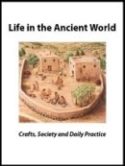
Tablet of Zimri-Lim, king of Mari. Louvre Museum, CC BY-SA 3.0, via Wikimedia Commons.
The minimalist-maximalist debate within biblical archaeology has waged for decades, with seemingly everyone taking sides. But could this debate be based on scholarly misconceptions about the archaeological evidence for David and Solomon’s kingdom? That is the proposal of Zachary Thomas and Erez Ben-Yosef in their article “David and Solomon’s Invisible Kingdom,” published in the Summer 2023 issue of Biblical Archaeology Review.

Ancient Judah: An Invisible Kingdom
For years, scholars have debated whether the monumental architecture from key biblical sites like Megiddo, Hazor, and Gezer can be attributed to David and Solomon, as the Bible describes, or whether these monuments were the achievements of later biblical kings. According to Thomas and Ben-Yosef, however, this is a question that archaeology simply cannot answer. Archaeologists and biblical scholars, they argue, begin from the false premise that kings and kingdoms always leave behind impressive archaeological remains. They suggest it is more likely that David and Solomon ruled over a primarily nomadic or semi-nomadic kingdom that left behind few archaeological traces.
On the surface, this may seem a wild theory. After all, how could nomadic people form a complex and powerful society? As Thomas and Ben-Yosef point out in their article, “For most people, the word ‘nomad’ brings to mind the 19th–century stories of European explorers who had to pay bribes to nomadic tribes to cross the Ottoman Empire’s more lawless territories.”
However, this theory has the benefit of many historical examples, including a few from the ancient Near East. Indeed, the idea that such people could not form complex societies is based largely on outdated theories of social progress and state formation. Nevertheless, it can be hard to understand how a nomadic kingdom might rise to power. After all, centuries of excavating city walls and fortifications have trained many archaeologists to think only of “hard power,” based on fortified cities and monumental architecture. Yet many times throughout history, it was “soft power” that held kingdoms together.
The Case of Mari: A Powerful Nomadic Kingdom
Perhaps the best example of such a powerful semi-nomadic kingdom in the ancient Near East comes from the city of Mari in upper Mesopotamia, on the modern border of Syria and Iraq. While an important site as far back as the third millennium BCE, Mari is best known as the royal city of the Amorite king Zimri-Lim (r. 1775–1761 BCE), who was a contemporary of the famous King Hammurabi of Babylon (r. 1792–1750 BCE).
However, Zimri-Lim’s power came not from the strength of his fortified cities, but from his kinsmen, for Zimri-Lim was not only the king of Mari, but also the tribal chief of a powerful Amorite tribe, the Simal. This is not substantially different from the biblical description of David (2 Samuel 5:1–5).
While Zimri-Lim lived in the city, many from his tribe—and countless other groups who fell under his rule—did not. These tribes were communities bound together through kinship, with some living in cities and towns and others wandering the steppe, far away from the settled areas. It was these semi-nomadic tribes, like the Simal, that made up a large part of Zimri-Lim’s kingdom and army, which was one of the most powerful of the time. It was through kinship and bringing together disparate tribal groups for common purpose that Mari flourished, not simply as a marginal kingdom on the periphery but as a major political power.
Many other well-known examples of nomadic kingdoms exist, such as the biblical Edomites or even the Mongol Empire. Clearly, being nomadic was no deterrent for the creation of a complex and important kingdom, but does that mean that David and Solomon’s kingdom was nomadic? Is there biblical evidence to support this theory? To find out, read Zachary Thomas and Erez Ben-Yosef’s article, “David and Solomon’s Invisible Kingdom,” published in the Summer 2023 issue of Biblical Archaeology Review.
Read more in Bible History Daily:
All-Access members, read more in the BAS Library:
The Iron Age Sites in the Negev Highlands: Military Fortresses or Nomads Settling Down?
Were the Early Israelites Pastoral Nomads?
Finding Evidence of Ancient Nomads
Not a BAS Library or All-Access Member yet? Join today.The post King David’s Nomadic Kingdom first appeared on Biblical Archaeology Society.
The post King David’s Nomadic Kingdom appeared first on Biblical Archaeology Society.

0 Commentaires